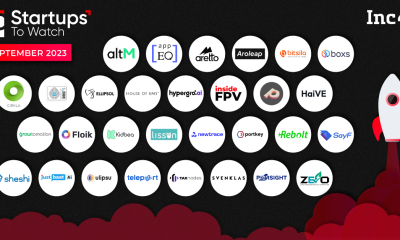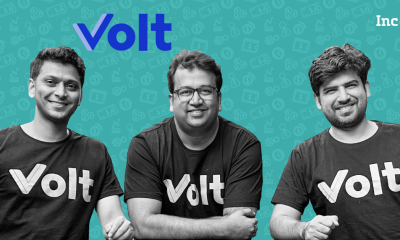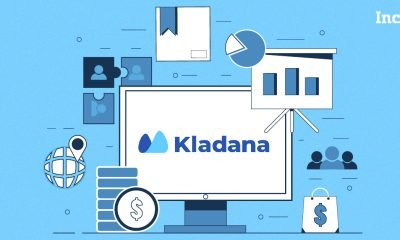Crptocurrency
Mysten Labs Launches Walrus Protocol Public Testnet for Decentralized Storage

In a significant advancement for decentralized storage solutions, Mysten Labs, the innovative team behind the Sui (SUI) blockchain, has officially launched the public testnet for Walrus Protocol. Announced by Chainwire on October 17, 2024, this launch marks a pivotal step in addressing the growing demand for secure and efficient storage of large data files within the blockchain ecosystem. The Walrus Protocol testnet is supported by the Sui network and introduces a suite of features including deletable blobs, staking mechanisms, and an explorer tool, aimed at enhancing user experience and system functionality.
Introduction to Mysten Labs and Sui
About Mysten Labs
Mysten Labs is a renowned blockchain technology company focused on building scalable and secure infrastructure for decentralized applications. With a strong emphasis on innovation, Mysten Labs has been at the forefront of developing cutting-edge solutions that address key challenges in the blockchain space. Their flagship project, Sui (SUI), is a high-performance Layer 1 blockchain designed to deliver unparalleled speed, security, and scalability for decentralized applications.
Understanding Sui (SUI)
Sui is a next-generation blockchain that leverages advanced consensus algorithms and novel data structures to achieve high throughput and low latency. It is engineered to support a wide range of applications, from DeFi platforms to gaming and NFTs, providing developers with the tools needed to create robust and efficient decentralized solutions. The integration of Walrus Protocol with Sui underscores Mysten Labs’ commitment to expanding the capabilities and utility of their blockchain ecosystem.
What is Walrus Protocol?
Overview of Walrus Protocol
The Walrus Protocol is a decentralized storage network specifically designed to handle large data files securely and efficiently. By leveraging the decentralized nature of blockchain technology, Walrus Protocol aims to provide a robust alternative to traditional centralized storage solutions, ensuring data integrity, availability, and resistance to censorship.
Key Features of Walrus Protocol
- Deletable Blobs:
- Functionality: Walrus Protocol introduces the concept of deletable blobs, allowing users to remove specific data chunks from the storage network when necessary. This feature addresses privacy concerns and compliance requirements by enabling data deletion without compromising the overall integrity of the storage system.
- Benefits: Enhances user control over stored data, ensures compliance with data protection regulations, and reduces the risk of unauthorized data retention.
- Staking Mechanism:
- Functionality: The staking feature allows users to participate in the network’s governance and security by locking up their tokens as collateral. Stakers earn rewards for contributing to the network’s stability and performance.
- Benefits: Encourages active participation, enhances network security, and aligns the interests of users with the long-term success of the protocol.
- Explorer Tool:
- Functionality: The explorer tool provides users with a user-friendly interface to navigate and manage their stored data. It offers real-time insights into data distribution, storage status, and network performance.
- Benefits: Improves transparency, simplifies data management, and provides valuable analytics for users and developers.
How Walrus Protocol Works
Decentralized Data Storage
Walrus Protocol operates on a decentralized network where data is distributed across multiple nodes, ensuring redundancy and high availability. By decentralizing storage, the protocol eliminates single points of failure, enhancing the resilience and reliability of data storage.
Data Encryption and Security
All data stored on Walrus Protocol is encrypted, ensuring that only authorized users can access their information. The protocol employs advanced cryptographic techniques to protect data from unauthorized access and breaches, maintaining the highest standards of security.
Scalability and Efficiency
Designed to handle large data files, Walrus Protocol utilizes efficient data storage and retrieval mechanisms to ensure fast and reliable access to stored information. Its architecture supports horizontal scaling, allowing the network to grow seamlessly as demand increases.
Implications for the Decentralized Storage Landscape
Enhancing Data Privacy and Control
The introduction of deletable blobs empowers users with greater control over their data, addressing one of the significant challenges in decentralized storage—data immutability. By enabling data deletion, Walrus Protocol aligns decentralized storage solutions with modern data privacy standards and regulations.
Promoting Network Security and Governance
The staking mechanism not only incentivizes user participation but also reinforces the network’s security. Stakers play a crucial role in maintaining the integrity and performance of the protocol, fostering a community-driven governance model that promotes sustainable growth.
Driving Adoption and Usability
The explorer tool enhances the user experience by providing intuitive data management capabilities. By simplifying interactions with the storage network, Walrus Protocol lowers the barrier to entry for new users and encourages broader adoption across various industries and use cases.
Future Developments and Roadmap
Public Testnet Launch and Feedback
The launch of the public testnet marks the beginning of a crucial phase where developers and users can interact with Walrus Protocol in a live environment. Feedback gathered during this phase will be instrumental in refining features, enhancing security measures, and optimizing performance before the mainnet deployment.
Mainnet Deployment
Following the successful testing phase, Walrus Protocol is slated for mainnet launch, where it will operate independently and support large-scale data storage solutions. The mainnet will integrate seamlessly with the Sui network, providing a comprehensive ecosystem for decentralized applications requiring robust storage capabilities.
Integration with Other Blockchain Projects
Mysten Labs plans to explore integrations with other blockchain projects and decentralized applications, expanding the utility and reach of Walrus Protocol. These integrations will facilitate interoperability and enable seamless data sharing across different platforms, enhancing the overall functionality of the decentralized storage network.
Continuous Improvement and Innovation
Commitment to continuous improvement ensures that Walrus Protocol remains at the cutting edge of decentralized storage technology. Ongoing research and development efforts will focus on enhancing scalability, security, and user experience, driving innovation within the blockchain storage landscape.
Challenges and Considerations
Adoption and Network Effect
Achieving widespread adoption is critical for the success of Walrus Protocol. Building a robust network effect requires active participation from users, developers, and stakeholders to ensure the protocol’s utility and sustainability.
Regulatory Compliance
Navigating the evolving regulatory landscape for decentralized storage solutions poses challenges. Ensuring compliance with data protection laws and industry standards is essential for gaining user trust and achieving mainstream acceptance.
Technical Scalability
Maintaining high performance and scalability as the network grows is a continuous challenge. Walrus Protocol must ensure that its architecture can handle increasing data volumes and user demands without compromising on speed or security.
Conclusion
The launch of the Walrus Protocol public testnet by Mysten Labs represents a significant leap forward in the realm of decentralized storage. By introducing innovative features such as deletable blobs, staking mechanisms, and an explorer tool, Walrus Protocol addresses critical needs for data privacy, security, and usability within the blockchain ecosystem. Supported by the robust infrastructure of the Sui network, this partnership positions Walrus Protocol as a formidable player in the decentralized storage landscape.
As the public testnet progresses, the collaboration between Mysten Labs and OrdinalsBot will play a pivotal role in refining and scaling the protocol, ultimately setting new standards for decentralized data storage solutions. Investors, developers, and users alike can anticipate a more secure, efficient, and user-centric storage experience, driving the adoption of decentralized technologies across various sectors.
To learn more about the innovative startups shaping the future of the crypto industry, explore our latest news article, where we delve into the most promising ventures and their potential to disrupt traditional industries.
Disclaimer: The information provided is not trading advice, Bitcoinworld.co.in holds no liability for any investments made based on the information provided on this page. We strongly recommend independent research and/or consultation with a qualified professional before making any investment decisions.
Crptocurrency
Voce Sabia to Launch $VS Token, Expanding the Celebrity-Backed Meme Token Trend in Brazil

Dubai, United Arab Emirates, October 17th, 2024, Chainwire
Voce Sabia, the fourth-largest content creator in Brazil with over 45 million subscribers on YouTube and a combined social media following of 86 million, is set to launch its own meme-inspired cryptocurrency token, the $VS token. With this launch, Voce Sabia joins a growing list of celebrities leveraging their platforms to introduce digital tokens, including rapper Iggy Azalea, whose token, $MOTHER, reached a peak market capitalization of $136 million.
Since the May release of Iggy Azalea’s $MOTHER token, which provided early adopters with substantial returns, celebrity-driven tokens have gained traction within the Web3 space. The success of these tokens can be attributed to the large and highly engaged communities that creators bring to the table. Capitalizing on the trend, Voce Sabia aims to use its substantial fanbase to drive the $VS token, leveraging a community that is nearly double in size compared to Azalea’s combined following.
The $VS token will launch through a fair release on the Solana blockchain. It boasts an initial market cap of just $25,510, setting the stage for accessible entry points for fans and potential investors. This launch will be powered by the XCAD Network, a platform dedicated to helping content creators issue tokens while building ecosystems around their unique brands. The XCAD Network has successfully supported various creator token launches, enabling the $VS token to offer unique fan engagement opportunities.
 Comparison Graphic released by Voce Sabia’s Social Media Team.
Comparison Graphic released by Voce Sabia’s Social Media Team.
The $VS token will give Voce Sabia’s community access to exclusive content, including merchandise, one-on-one calls, and other interactive opportunities, fostering deeper connections between the creator and their followers. Moreover, $VS holders will have governance rights, enabling them to participate in selected decisions regarding the channel’s future direction.
The entry of Voce Sabia into the meme token arena is emblematic of a larger movement among public figures integrating Web3 technologies to engage their fans on new levels. The trend highlights the appeal of combining meme culture with strong social media followings, driving user engagement and fostering active communities.
For more information and to stay updated on the $VS token launch, Voce Sabia has provided links to its official communication channels:
Twitter: https://x.com/Vocesabiatoken
Telegram: https://t.me/vocesabiatoken
WhatsApp: https://www.whatsapp.com/channel/0029Vaq3U7hJENxzmKNrnV00
Contact
Jeff Sa
Memespotlightorg@outlook.com
Disclaimer: The information provided is not trading advice, Bitcoinworld.co.in holds no liability for any investments made based on the information provided on this page. We strongly recommend independent research and/or consultation with a qualified professional before making any investment decisions.
Crptocurrency
Aleph Zero Launches Subsecond Shielding on Testnet, Delivering Client-Side ZK Privacy for DeFi

Zug, Switzerland, October 17th, 2024, Chainwire
Most zero-knowledge proofs are generated server-side for scaling, but Aleph Zero’s zkOS does that directly on users’ devices, offering privacy in a fraction of second
Aleph Zero, the leading blockchain platform recognized for its focus on privacy and scalability, announces the launch of the first feature of zkOS (zero-knowledge operating system)—Shielding, on its EVM Testnet. This release marks the first opportunity for users to experience the shielding feature of zkOS in action, demonstrating the speed and privacy capabilities of Aleph Zero’s zero-knowledge proof (ZK) technology optimizations.
Privacy at Lightning Speed
The Shielding Demo release is a significant milestone for Aleph Zero, representing its commitment to developing practical privacy solutions for the blockchain industry. Aleph Zero’s zkOS enables zero-knowledge proofs to be generated client-side—meaning data is encrypted locally on the user’s device and never leaves unencrypted—providing high levels of privacy without compromising transaction speed. The Shielding Demo serves as the first practical interface for users to experience this privacy functionality, with zero-knowledge proofs generated within 0.5-3 seconds, ensuring that privacy has minimal impact on transaction performance.
“Privacy has long been a challenge in blockchain, often due to poor user experience,” said Adam Gagol, Co-Founder & CTO of Aleph Zero. “With today’s release, we’re delivering one of the fastest client-side ZK directly to users, combining privacy and performance. The release of the Shielding Demo offers a glimpse into how zkOS can bring privacy to DeFi without sacrificing speed or usability.”
How the Shielding Demo Works
The Shielding Demo provides an intuitive interface for users to test Aleph Zero’s zkOS privacy layer. Here’s how it works:
- Data Privacy: zkOS generates zero-knowledge proofs locally on the user’s device, ensuring that data remains private and secure.
- Transaction Flow: Users generate ZK proofs, send transactions to a relayer, and then they are executed on-chain—all while maintaining privacy.
- Fast Proving Times: The system delivers ZK proofs in 0.5-3 seconds on most devices, demonstrating zkOS’s speed and its minimal impact on transaction times.
The Testnet version of zkOS allows users to interact with the system and witness its capabilities, though Aleph Zero notes that the privacy features will be built directly into the upcoming Common app.
Why zkOS Matters: A Glimpse Into the Future
The launch of the Shielding Demo on Testnet is only the beginning. Aleph Zero’s roadmap for zkOS extends far beyond this initial release, with ongoing work on simplifying the user experience and the introduction of additional privacy features, such as ZK-ID and anonymity revokers, to ensure both privacy and protection against fraudulent use of the platform.
The system is designed to be easily integrated by developers, providing a privacy framework that requires minimal cryptographic knowledge. This simplicity, combined with Aleph Zero’s rapid client-side ZK proof generation, makes zkOS a critical tool for developers building privacy-centric applications across DeFi and other web3 sectors.
Unlocking Privacy for New Use Case
The privacy space in blockchain has been facing increased challenges, such as regulatory scrutiny and delistings, often due to concerns over non-compliance. Aleph Zero’s zkOS offers a fresh approach by delivering privacy solutions that balance user confidentiality with regulatory requirements. Instead of focusing solely on anonymity, zkOS is designed to meet both the needs of users and the evolving demands of compliance.
zkOS enables users to manage their assets securely across multiple blockchains, ensuring their transactions remain private. Unlike traditional privacy methods that rely on centralized or hardware-based systems, zkOS operates directly on the client-side, safeguarding privacy without external dependencies.
Next Steps for Aleph Zero
As the Testnet release progresses, Aleph Zero is focusing on refining Shielding and zkOS for its Mainnet deployment. Users who engage with the Shielding Demo will have the opportunity to be whitelisted for upcoming zkOS Beta testing on Aleph Zero’s EVM Mainnet.
About Aleph Zero
Aleph Zero is an ecosystem of blockchain solutions that are engineered for speed, data confidentiality, and ease of development. It achieves efficiencies akin to conventional web2 systems, upholds rigorous standards for data protection via zero-knowledge proofs (ZKP), and offers a comprehensive toolset for development across web3, ranging from WASM-based Rust to EVM-based Solidity environments. Aleph Zero’s versatility is highlighted by over 40 use cases being actively developed, showcasing its adaptability across various sectors and applications. These use cases are part of an engaged community and growing ecosystem of web3 applications supported by Aleph Zero programs.
For more information, visit https://alephzero.org/.
For any inquiries about this release, please contact josh@serotonin.co or ana@serotonin.co.
Contact
PR Manager
Josh Adams
Aleph Zero
josh@serotonin.co
Disclaimer: The information provided is not trading advice, Bitcoinworld.co.in holds no liability for any investments made based on the information provided on this page. We strongly recommend independent research and/or consultation with a qualified professional before making any investment decisions.
Crptocurrency
DeBridge Launches DBR Governance Token with Airdrop to Nearly 500,000 Users

In a major development for the cross-chain ecosystem, DeBridge, a prominent cross-chain infrastructure provider, has launched its governance token, DBR, with a significant airdrop to nearly 500,000 early users and community members. According to CoinDesk, the token was built on Solana and has an initial circulation of 1.8 billion tokens out of a total 10 billion maximum supply. The launch marks a pivotal moment for DeBridge as it seeks to decentralize governance and empower its community. Trading for DBR started at $0.03 per token, with the token targeting a fully diluted valuation of $300 million.
Understanding the DBR Governance Token
What is DBR?
DBR is the governance token for the DeBridge ecosystem, designed to allow token holders to participate in governance decisions, such as protocol upgrades, network parameters, and the direction of the platform. By introducing DBR, DeBridge aims to decentralize control over its cross-chain infrastructure and create a more community-driven decision-making process.
Tokenomics of DBR
- Maximum Supply: 10 billion DBR
- Initial Circulation: 1.8 billion DBR (18% of the total supply)
- Airdrop Distribution: Nearly 500,000 early users and community members were selected to receive DBR tokens through an airdrop.
- Initial Price: $0.03 per token
- Fully Diluted Valuation (FDV): $300 million
The distribution of DBR through an airdrop incentivizes early participants and supporters of the DeBridge ecosystem, rewarding them for their contributions and engagement. The airdrop is being conducted in two phases, and recipients must adhere to specific conditions to claim their tokens, including penalties for early full withdrawals.
Phased Airdrop and Withdrawal Penalties
Two-Phase Airdrop Distribution
DeBridge’s airdrop distribution is structured in two phases to ensure that tokens are distributed fairly and to incentivize long-term participation:
- Phase 1: Eligible users can claim a portion of their DBR tokens initially, but only a percentage of the total allocation will be available for immediate withdrawal.
- Phase 2: In the second phase, users can claim the remaining portion of their airdropped DBR tokens. However, penalties apply to users who attempt to withdraw all their tokens early, discouraging short-term speculation and encouraging long-term holding.
The penalty mechanism is designed to promote the stability of the DBR token and prevent rapid selling that could destabilize the token’s market value.
Encouraging Long-Term Engagement
By implementing a phased airdrop with penalties for early withdrawals, DeBridge aims to foster long-term community engagement. This approach encourages token holders to remain active participants in the DeBridge ecosystem and contribute to the governance and growth of the platform over time.
The Role of DBR in DeBridge Governance
Decentralizing Governance
The introduction of the DBR token is a significant step toward decentralizing governance within the DeBridge ecosystem. Token holders will have the power to vote on key governance proposals, including:
- Protocol Upgrades: Proposals to enhance DeBridge’s cross-chain capabilities and infrastructure.
- Network Parameters: Adjustments to transaction fees, security mechanisms, and other core network settings.
- Community Initiatives: Voting on grants, partnerships, and other initiatives that promote the growth of the DeBridge ecosystem.
By giving the community a direct say in the governance process, DeBridge aims to create a more inclusive and decentralized decision-making framework.
Incentivizing Participation
DBR token holders will be incentivized to participate in governance through staking and voting rewards. By actively engaging in the governance process, users can earn additional DBR tokens and contribute to the long-term success of the DeBridge platform. This creates a positive feedback loop where active governance participation leads to increased rewards and influence within the ecosystem.
Trading and Market Impact
Initial Trading and Market Performance
DBR began trading at $0.03 per token, with an initial fully diluted valuation of $300 million. Early trading volumes have been strong, reflecting significant interest in the token from both airdrop recipients and the broader cryptocurrency community.
Potential for Price Volatility
As with many newly launched tokens, DBR is expected to experience price volatility in its early trading days. The phased airdrop and withdrawal penalties are designed to mitigate some of this volatility by discouraging short-term speculation and promoting long-term holding.
Long-Term Growth Prospects
The long-term growth prospects for DBR are closely tied to the success of the DeBridge platform and its cross-chain capabilities. As DeBridge continues to expand its services and partnerships, the utility and demand for DBR are likely to increase. Additionally, as more users participate in governance and staking, the circulating supply of DBR could become more distributed, further stabilizing the token’s price.
The Importance of Cross-Chain Infrastructure
DeBridge’s Role in the Cross-Chain Ecosystem
DeBridge is a cross-chain infrastructure provider that enables seamless interoperability between different blockchain networks. As the cryptocurrency ecosystem becomes more fragmented across multiple chains, cross-chain solutions like DeBridge are essential for ensuring that assets and data can move freely and securely between networks.
By launching a governance token, DeBridge is decentralizing control over its infrastructure and empowering the community to shape the future of cross-chain interoperability. This move aligns with the broader trend in the crypto space toward decentralization and community-driven governance.
Enhancing Cross-Chain Collaboration
The DBR token will play a crucial role in enhancing cross-chain collaboration by incentivizing community members to participate in governance decisions that improve interoperability between blockchain networks. As more projects and users adopt DeBridge’s services, the importance of cross-chain governance will continue to grow, making DBR a key player in the evolution of decentralized finance (DeFi).
Conclusion
The launch of the DBR governance token by DeBridge marks a significant milestone in the platform’s journey toward decentralization and community-driven governance. With an airdrop to nearly 500,000 early users, the DBR token aims to empower the community to take an active role in shaping the future of cross-chain infrastructure. By introducing phased distribution and withdrawal penalties, DeBridge is encouraging long-term engagement and discouraging short-term speculation, ensuring the stability of the DBR token.
As DeBridge continues to expand its cross-chain services and partnerships, the demand for DBR is expected to grow, making it an integral part of the platform’s governance and ecosystem. With its initial trading price of $0.03 per token and a fully diluted valuation of $300 million, DBR has already captured the attention of the crypto market, and its future looks promising as cross-chain solutions become increasingly essential in the decentralized finance landscape.
To learn more about the latest developments in cross-chain infrastructure and governance tokens, explore our latest news article, where we discuss the key trends shaping the future of decentralized finance.
Disclaimer: The information provided is not trading advice, Bitcoinworld.co.in holds no liability for any investments made based on the information provided on this page. We strongly recommend independent research and/or consultation with a qualified professional before making any investment decisions.
-

 Startup Stories1 year ago
Startup Stories1 year agoWhy Millennials, GenZs Are Riding The Investment Tech Wave In India
-

 Startup Stories1 year ago
Startup Stories1 year agoStartups That Caught Our Eyes In September 2023
-

 Startup Stories1 year ago
Startup Stories1 year agoHow Raaho Is Using Tech To Transform India’s Fragmented Commercial Trucking
-

 Startup Stories11 months ago
Startup Stories11 months agoMeet The 10 Indian Startup Gems In The Indian Jewellery Industry’s Crown
-

 Crptocurrency8 months ago
Crptocurrency8 months agoLither is Making Crypto Safe, Fun, and Profitable for Everyone!
-

 Startup Stories1 year ago
Startup Stories1 year agoHow Volt Money Is Unlocking The Value Of Mutual Funds With Secured Lending
-

 E-commerce1 year ago
E-commerce1 year agoTop Online Couponing Trends To Watch Out For In 2016
-

 Startup Stories1 year ago
Startup Stories1 year agoWhy Moscow-Based Kladana Considers Indian SME Sector As The Next Big Market For Cloud Computing




